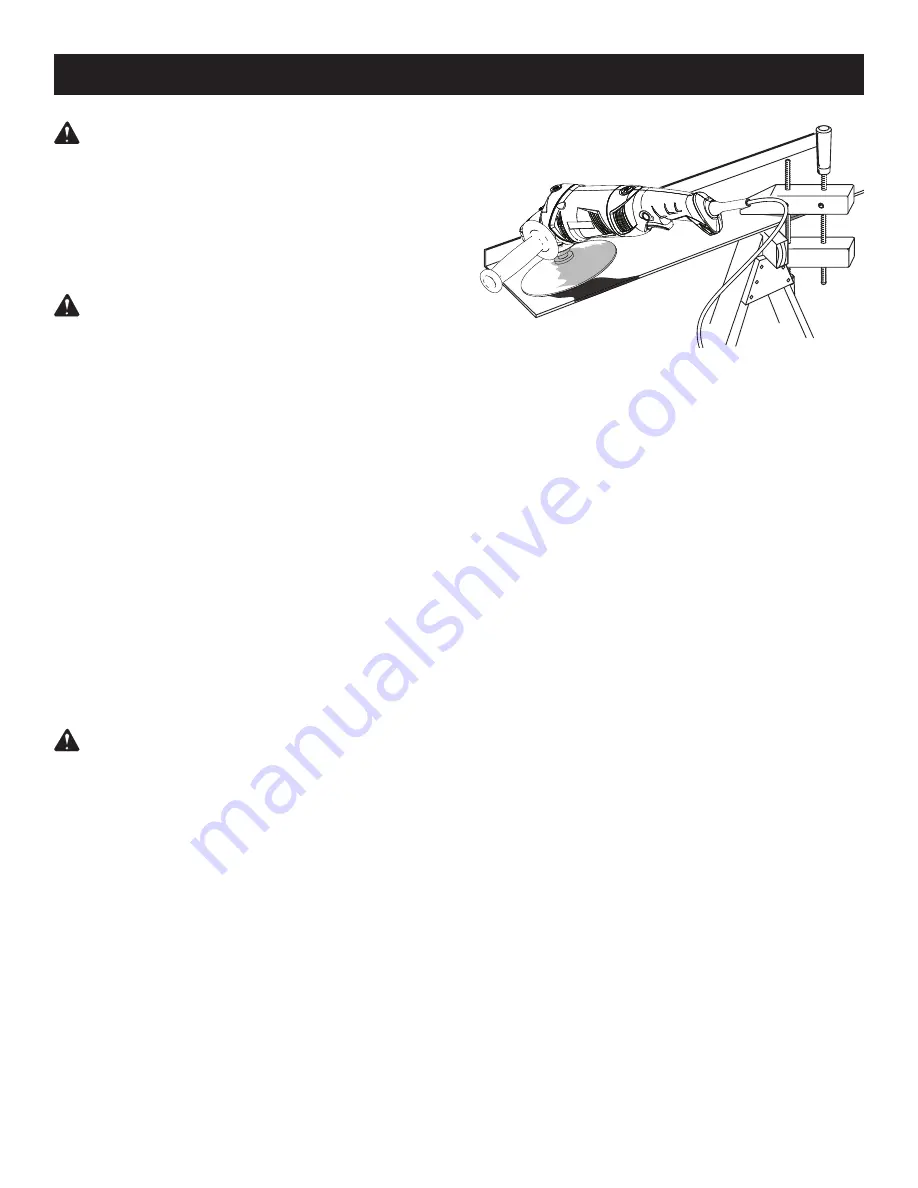
13
OPERATION
Fig. 10
SANDING DISC SELECTION
Selecting the correct size grit and type sanding disc is
an extremely important step in achieving a high quality
sanded finish. Aluminum oxide, silicon carbide, and other
synthetic abrasives are best for power sanding. Natural
abrasives, such as flint and garnet are too soft for
economical use in power sanding.
In general, coarse grit will remove the most material and
finer grit will produce the best finish in all sanding
operations.
The condition of the surface to be sanded will determine
which grit will do the job. If the surface is rough, start with
a coarse grit and sand until the surface is uniform.
Medium grit may then be used to remove scratches left by
the coarser grit and finer grit used for finishing the surface.
Always use the proper grit sanding disc, and not extra
pressure when sanding. Continue sanding with each grit
until surface is uniform.
WARNING:
To prevent loss of control and possible
serious personal injury, always operate the tool with
both hands, keeping one hand on the side handle.
SANDING
See Figure 10.
Clamp or otherwise secure the work to prevent it from
moving under your sander/polisher. Secure small workpieces
in a vise or use clamps to secure them to a workbench.
WARNING:
Unsecured work could be thrown
towards the operator causing injury.
Hold the tool in front and away from you, keeping it clear
of the workpiece. Start the tool by depressing the switch
trigger and letting the motor build to its maximum speed.
Gradually lower sander/polisher to the workpiece at a
slight (5° to 8°) angle.
Do not attempt to hold the sanding disc flat on the
workpiece. Always keep the tool in motion moving over
the work, allowing it to operate freely without unneces-
sary pressure. The weight of the unit supplies adequate
pressure, so let the sanding disc and sander do the work.
Applying additional pressure only slows the motor, rapidly
wears sanding discs, and greatly reduces sander speed.
Excessive pressure will overload the motor, causing
possible damage from motor overheating, which can
result in inferior work. Any finish or resin on wood may
soften from the frictional heat.
Do not sand too long in one spot. This will cause uneven
sanding and gouging of the work.
Upon completion of a sanding operation, lift tool away
from work surface before turning off.
WARNING:
Sanding disc must come to a complete
stop before setting tool down on workbench. Failure
to do so can cause the tool to be thrown from
workbench because of sanding disc rotation. This
could result in damage to the tool or possible serious
injury to the operator.


































